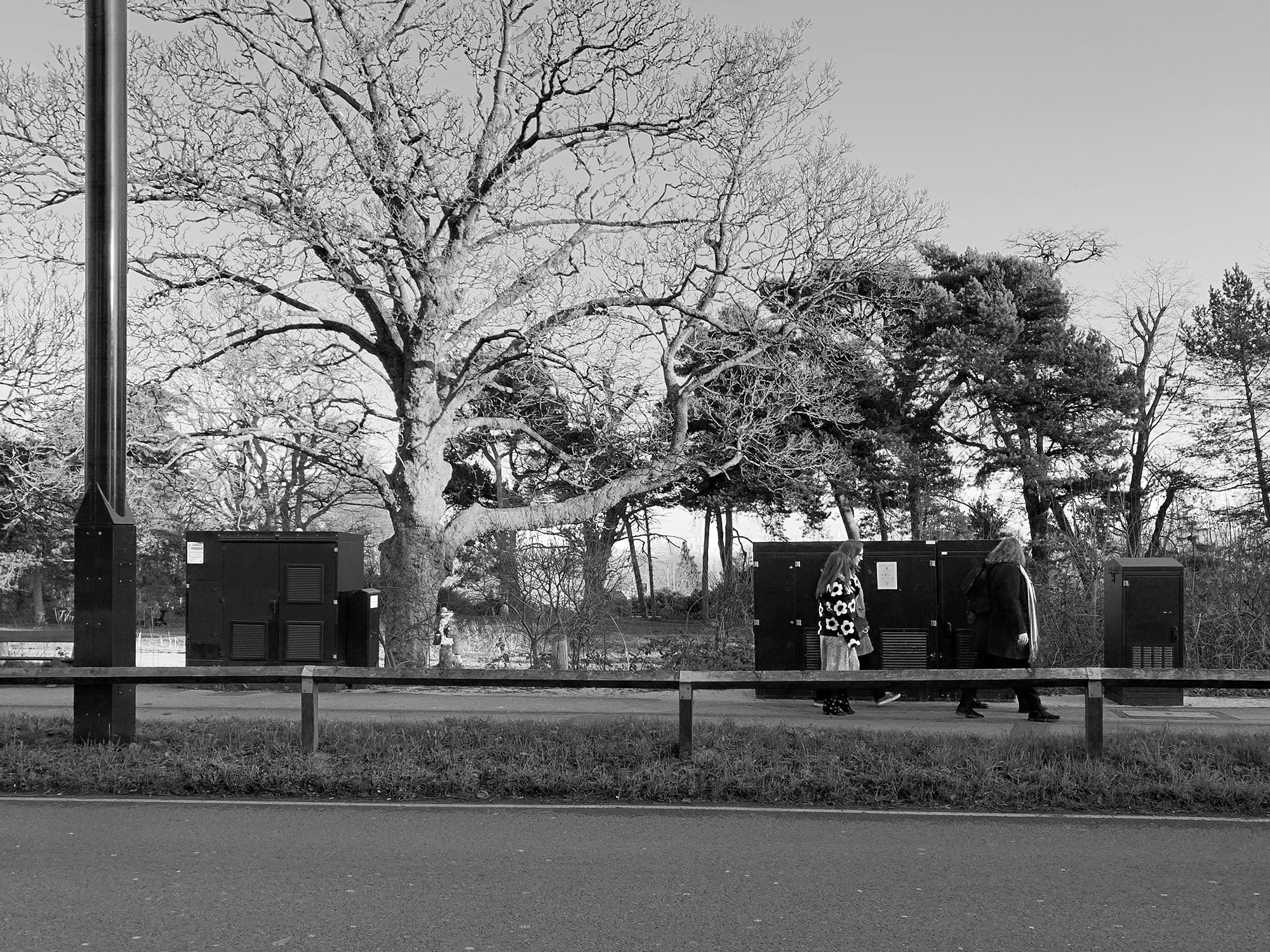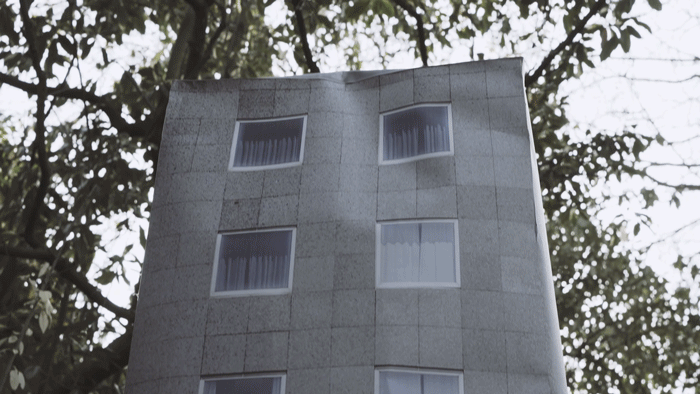Potemkin Village
18.2.20In recent years there has been a quiet proliferation of telecom cabinets on London’s streets. An anonymous encroachment of the digital realm’s physical infastructure into our public spaces.
The cabinets often appear in clusters or, if on their own, with slightly pitched roofs. At a distance this gives them the curious appearance of miniature housing.
The cabinets often appear in clusters or, if on their own, with slightly pitched roofs. At a distance this gives them the curious appearance of miniature housing.



A quick ride through the seemingly endless development of luxury apartment blocks in King’s Cross.
Meanwhile, London’s international property speculation appears to continue unabated. It floods the market with luxury apartment blocks for wealthy tenants, airbnb or ‘buy to leave’ purchasers; and prices too many Londoners out of the city.
This is alongside damning revelations about the use of combustible cladding on housing blocks, exposed by the Grenfell fire. And when it comes to ‘new’ homes, the drive to maximise returns has increased densification in the form of more and more housing blocks (sometimes segregating between private and social tenancy), where once there might have been small houses.
The title Potemkin Village describes a false construct intended to mask an undesirable fact or condition. It is said to have originated in 18th century Russia, but I think it perfectly describes this broken housing market.
This is alongside damning revelations about the use of combustible cladding on housing blocks, exposed by the Grenfell fire. And when it comes to ‘new’ homes, the drive to maximise returns has increased densification in the form of more and more housing blocks (sometimes segregating between private and social tenancy), where once there might have been small houses.
The title Potemkin Village describes a false construct intended to mask an undesirable fact or condition. It is said to have originated in 18th century Russia, but I think it perfectly describes this broken housing market.
 Temporary building works cover in Knightsbridge.
Temporary building works cover in Knightsbridge.Wandering around London, I occasionally see building works dressed with temporary graphic coverings, like the one above. I like their optimistic impermanence (albeit somewhat disingenous) and am trying my own scaled-down versions, but instead placing them over the telecom cabinets on nearby streets.

There is a lone telecom cabinet at the end of the street. As my initial exercise, I have made a paper prototype cover, printed with the photographic image of a housing block fascia, and then placed it over the top of it.
Test installation of paper prototype.